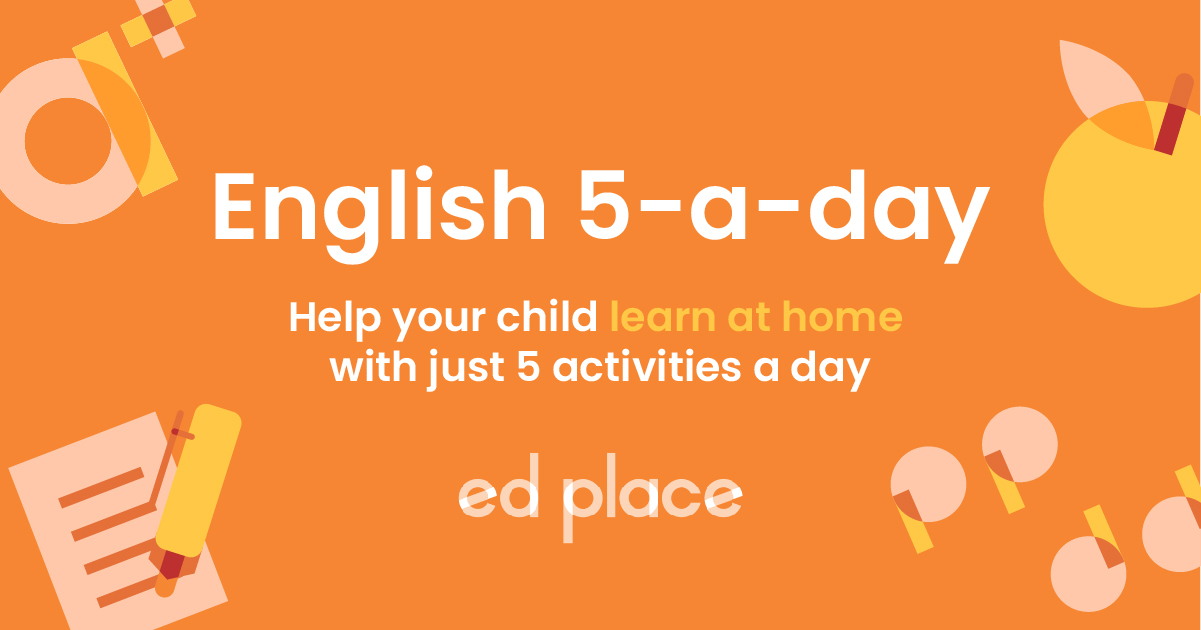
EdPlace's Year 6 Home Learning English Lesson: Prefixes and Suffixes
Looking for short lessons to keep your child engaged and learning? Our experienced team of teachers have created English, maths and science lessons for the home, so your child can learn no matter where they are. And, as all activities are self-marked, you really can encourage your child to be an independent learner.
Get them started on the lesson below and then jump into our teacher-created activities to practice what they've learnt. We've recommended five to ensure they feel secure in their knowledge - 5-a-day helps keeps the learning loss at bay (or so we think!).
Are they keen to start practising straight away? Head to the bottom of the page to find the activities.
Now...onto the lesson!
Confused by prefixes and suffixes?
Read on to solve the mystery of what they are; the spellings rules you need to know for some of them (ible,able,cial, tial) and how they affect the meaning of the root word.
We all use prefixes and suffixes in our everyday conversations and writing. However, most of us don’t really think about them, or even realise we are using them!
- Prefixes are sets of letters that are added to the beginning of a word (telephone)
- Suffixes are sets of letters that are added to the ends of a word (comfortable)
- Prefixes and suffixes are NOT words in their own right
- There are lots of different prefixes and suffixes
- Some words have both a prefix and a suffix (uncomfortable)
- There are spellings rules that we need to remember when adding different prefixes and suffixes
- Adding a prefix or suffix changes the meaning of the word it is added to!
Many children will be using some prefixes and suffixes correctly in their writing without even realising they are using them! We're sure that if you follow this article through, your child will be able to:
1) Understand that prefixes and suffixes affect the meaning of the root word
2) Apply the correct spelling rules for some prefixes and suffixes
3) Explain the meaning of some prefixes and suffixes
Step 1: Vocabulary Check!
Prefix: Prefixes are added to the beginning of an existing word in order to create a new word with a different meaning.
Suffix: Suffixes are added to the end of an existing word in order to create a new word with a different meaning.
Root word: A root word is a basic word with no prefix or suffix added to it.
Vowel: the letters a, e, I, o, u are vowels. The letter y sometimes acts a vowel in words (my, cry).
Consonant: all letters that are not vowels.
Step 2 - What do we already know about prefixes and suffixes?
In previous year groups children will have learned to use many prefixes and suffixes including the prefixes: un, dis, mis, in. In most cases, there is no change to the root word when a prefix is added.
Examples
un + happy = unhappy
dis + approve = disapprove
mis + understand = misunderstand
in + active = inactive
In all of the above cases the prefix has a negative meaning ( unhappy = not happy).
Exceptions
The suffix ‘in’ can also mean ‘in/into’. Incendiary – an incendiary device causes objects to set on fire.
Here are some more prefixes and their meanings:
re - means ‘again’ or 'back’ – return, repeat
inter – means ‘among’ or ‘between’ – interlude
anti – means ‘against’ – antiseptic
sub – means ‘under’ – submarine
auto- means ‘own’ or ‘self’ – automatic
Step 3 - What's next for year 6?
There are a lot of prefixes and suffixes that children need to know by the end of year 6. Here we are going to look at just a few of them.
A: Spelling rules for the suffixes ‘ible’ and ‘able’
Both of these suffixes are common spelling patterns and usually have the same sound in words. They both mean ‘able to’ or ‘fit for’ - movable (able to move), legible (able to be read). In most cases, there is not a complete root word if you remove the suffix ‘ible’
examples:- visible, terrible, horrible
exceptions to this rule:- digestible, flexible
In most cases, there is a complete word when you remove the suffix ‘able’
Examples of this are:- comfortable, considerable, changeable
Usually, when the root word ends with an ‘e’, drop the ‘e’, and then add ‘able’.
- move + able = movable
- adore + able = adorable
- some exceptions to this rule are saleable, likeable
Also, when the root word ends in ‘y’ we drop the ‘y’ and add an ‘’i’
- rely = reliable
B. Spelling rules when using ‘cial’ and tial’
The suffixes ‘tial’ and ‘cial’ mean ‘relates to’ (racial – relating to race, facial – relating to the face)
Thankfully, these rules are quite straightforward…
Usually, ‘cial’ comes after a vowel letter
examples:-
facial, racial, crucial, beneficial
Usually, ‘tial’ is used after a consonant letter
examples:-
confidential, torrential, partial
...but as always there are some exceptions!
initial, financial
Step 4 - Put your knowledge to the test!
It’s always a good idea to practise new skills with your child to assess their understanding. Why not have a go at the questions below together? Choose the correct word in each of these sentences. Can your child explain their choice?
1) The puppy was adoreable/adorable.
2) At the moment, the weather is very changable/changeable.
3) Yesterday, I had a horrible/horrable experience when I was chased by a fierce dog.
4) I had a letter through the post that was confidential/confidencial.
5) The weather forecast suggested that there would be torrenttial/torrential rain tomorrow.
Challenge:
Work out the root words for the following:
beneficial, reliable, forcible, sensible. This one is tricky – applicable
Step 5 - Show what you know
We hope your child is feeling more confident with prefixes and suffixes! If so, now is the perfect time for you to put them to the test. Here are some activities which will help to consolidate their learning. We recommend doing them in this order so that the learning builds progressively.
All activities are created by teachers and automatically marked. Plus, with an EdPlace subscription, we can automatically progress your child at a level that's right for them. Sending you progress reports along the way so you can track and measure progress, together - brilliant!
Activity 1: Use Different Suffixes in Spelling 'able' and 'ible'
Activity 2: Use Different Suffixes in Spelling 'ent'
Activity 3: Use Different Suffixes in Spelling 'ence'
Activity 4: Know Your Suffixes: -graph or -graphy
Activity 5: Know Your Prefixes: auto-, bi-, circum-, tele- and trans-
Answers
1) adorable
2) changeable
3) horrible
4) confidential
5) torrential
Keep going! Looking for more activities, different subjects or year groups?
Click the button below to view the EdPlace English, maths, science and 11+ activity library








